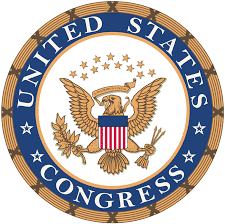
WASHINGTON, D.C. — The U.S. Senate today passed the Infrastructure Investment and Jobs Act, its $1.2 trillion bipartisan legislation, by a 69-30 vote, sending the bill to the U.S. House of Representatives for consideration and taking a step to end a substantial period of largely flat federal investment in the nation’s roads, rails and bridges.
The bill contains $786 billion to address a backlog of national infrastructure needs, $66 billion for Amtrak and $39 billion for public bus, transit and subway systems.
“This legislation marks the end of a long period of stagnation in the upper chamber of Congress when it comes to putting additional money into the nation’s infrastructure,” SMART Transportation Division National Legislative Director Greg Hynes said. “There was a lot of talk of Infrastructure Week and the like in prior years, but nothing ever was accomplished with the bills dying in the Senate. Now we see a strong effort to protect bus and transit workers to shield them from assaults and a major influx of money that will allow Amtrak to provide expanded service and help its national passenger service to flourish. These are very encouraging signs and the bill’s passage is a major win for our Amtrak, bus and transit members.”
Absent from the Senate bill was a two-person freight crew provision that was passed through the U.S. House of Representatives’ infrastructure bill known as the INVEST in America Act (H.R. 3684). Yardmaster hours of service, also in the INVEST Act, suffered the same fate.
The 10 bipartisan senators who authored the Infrastructure Investment and Jobs Act did not include those items when writing the more than 2,700 pages of the legislation, and no amendment adding a 2PC provision was introduced by senators as the bill was considered for passage. Only bipartisan amendments were considered during the amendment process, and no Republican senators offered to co-sponsor the two-person-crew or yardmaster hours of service items as an amendment.
This does not close the door on national two-person crew bill efforts with House leaders, including Transportation and Infrastructure Committee Chairperson Peter DeFazio, Railroad Subcommittee Chair Donald Payne and other supporters of rail safety, working to find a vehicle to get a legislative solution passed. Regulatory efforts via the federal Department of Transportation and the Federal Railroad Administration will be intensified.
“We ask that members continue to be loud and clear about rail safety and the importance of a certified conductor and certified engineer being in the cab to elected officials via phone call, letter, and email and also by raising public awareness on social media,” Hynes said. “We have come further than we ever have in getting national two-person crew legislation accomplished this cycle. The battle is not over, and there is much more to be done.”
Related News
- Online fundraiser established for Local 821 officer’s family
- Ground broken on Brightline West — new rail jobs incoming!
- After FRA rule, Jared Cassity explains why we still need the Rail Safety Act
- ALERT for L.A.-area members — operator stabbing suspect at large
- SMART-TD wins SEPTA members’ security in their chosen craft
- Shining brightly in the midst of darkness
- Early-bird pricing for TD National Training Seminar ends April 30
- SMART-TD endorses U.S. Sen. Mike Braun (R-Indiana) as the next governor of the Hoosier State!
- FTA action on bus, transit safety plans praised by SMART-TD
- 27 transit members reinstated back to work in Montebello, California